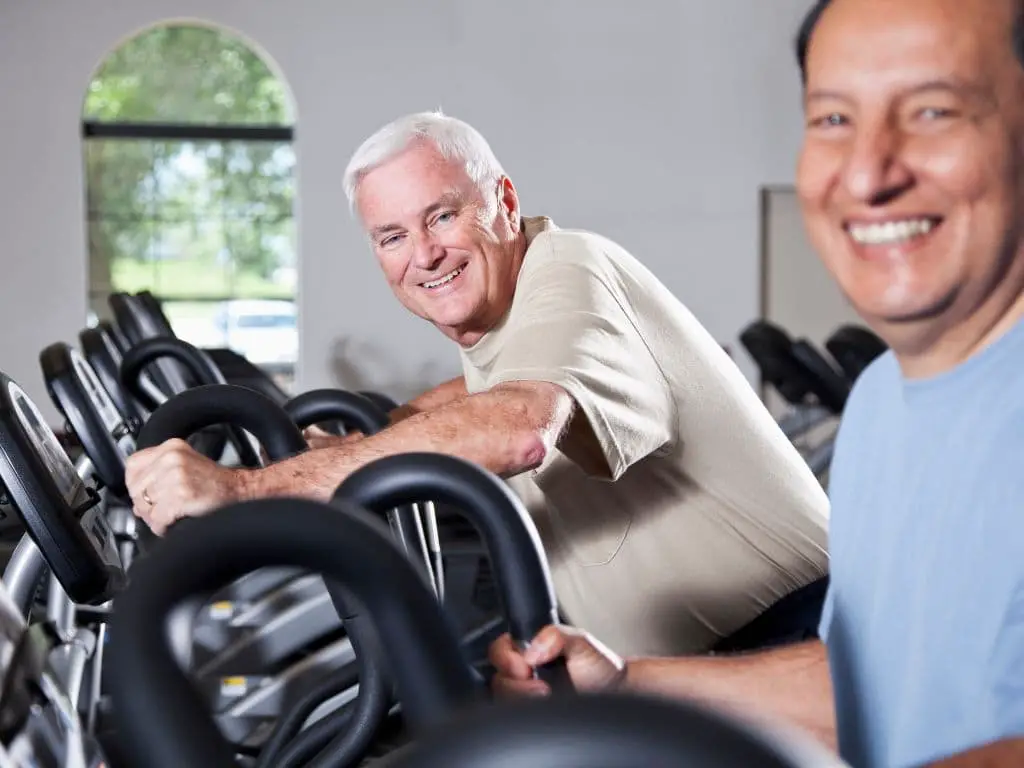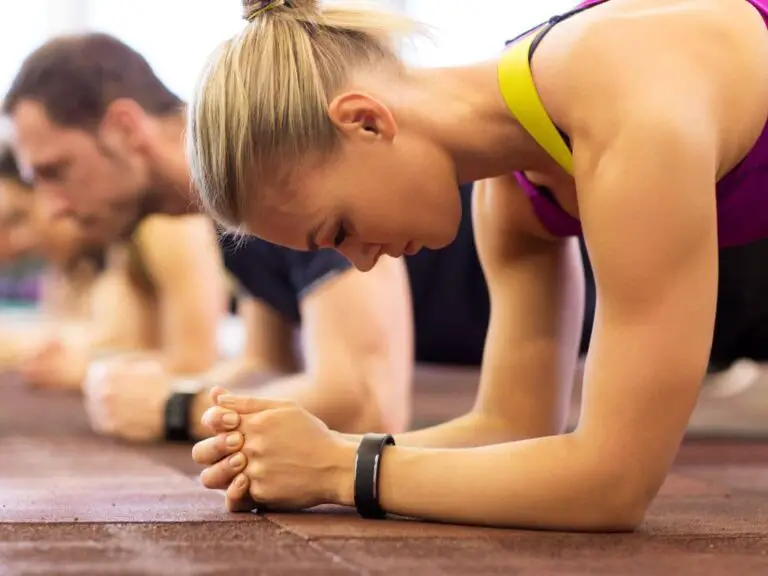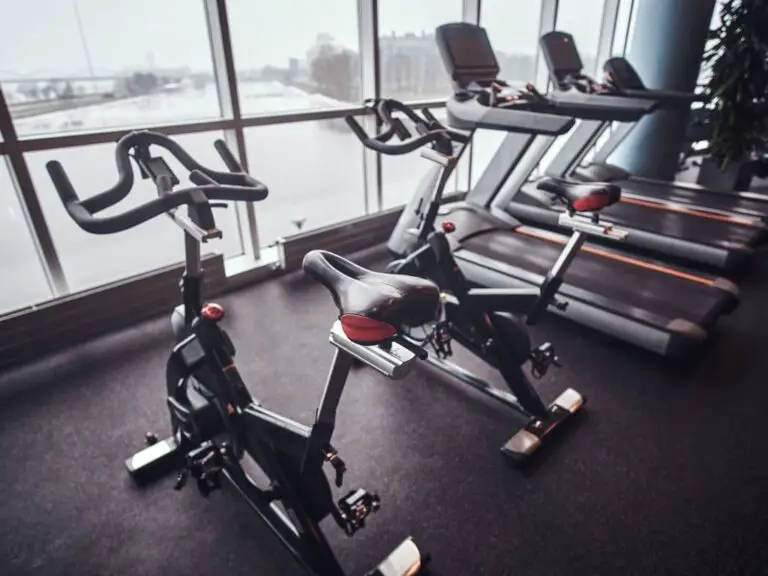Elliptical Workouts for Seniors: Duration, Benefits, and Safety Tips
For seniors, staying active is vital to maintaining health, independence, and quality of life. However, finding exercises that are safe, accessible, and effective can be a challenge. Joint pain, mobility issues, and concerns about falls often limit seniors’ workout options. Fortunately, using an elliptical machine can provide an excellent solution for older adults seeking to reap the myriad benefits of regular physical activity.
Elliptical trainers offer a smooth, low-impact cardio and strength training workout perfect for the needs of seniors. When used properly, ellipticals provide cardiovascular conditioning, improve balance and coordination, strengthen major muscle groups, and aid in managing a healthy weight – all with minimal joint stress.
This article will cover key considerations for seniors starting an elliptical workout routine. We’ll discuss recommended duration and frequency guidelines to maximize results while avoiding injury and burnout. Equipment recommendations and proper form tips will help identify the best elliptical machines and exercises for seniors. With a doctor’s input and some patience, elliptical workouts can transform senior fitness levels, independence, and quality of life.

Why Should Seniors Use an Elliptical Machine?
As we age, staying active becomes increasingly important for maintaining health and wellbeing. However, many seniors struggle to find exercises that are both safe and effective. Using an elliptical machine can be an excellent solution. Ellipticals provide a low-impact cardio workout that is gentle on the joints, making them an ideal option for seniors.
One common question is: can a 65 year old use an elliptical? The answer is yes! As long as they start slowly and build up duration and resistance gradually, most healthy 65 year olds can safely use an elliptical machine. Always consult a doctor before beginning any new exercise routine. But for the majority of seniors, ellipticals offer an accessible path to reaping the many benefits of regular physical activity.
How Long Should a Senior Use an Elliptical?
When first starting out, seniors should aim for 15-20 minutes on the elliptical 2-3 times per week. This allows the body to adjust and builds foundational cardiovascular fitness. After a few weeks, if they are feeling up to it, seniors can increase elliptical workouts to 20-30 minutes 2-3 times per week.
The key is to increase duration slowly and listen to the body. Stop if you feel dizzy, short of breath, or pain. Build up time on the machine gradually as your stamina improves. Thirty minutes is a good target duration for most seniors to strive for. But take your time ramping up to longer workouts. Consistency with shorter sessions is better than overexertion.
How Often Should Seniors Use an Elliptical?
In conjunction with conservatively increasing duration, seniors should also limit elliptical sessions to 2-3 times per week at first. This allows for adequate rest and recovery between workouts.
After the body adapts, frequency of elliptical workouts can be increased to 3-5 times per week for greater health and fitness benefits. But take it slowly, especially if new to exercising. Too much too soon can result in burnout or overuse injuries. Listen to your body and take rest days when needed.
Maintaining a sustainable long-term workout schedule is more important than rapid increases. Acceptable elliptical machine frequency for seniors falls anywhere between 2-5 times per week depending on individual fitness levels.
Which Is the Best Elliptical for Seniors?
When selecting an elliptical machine, key features seniors should look for include:
- Adjustable stride length: Allows customization based on height and range of motion.
- Smooth magnetic resistance: Provides steady resistance without jarring impacts.
- Easy to read display: Large text and intuitive controls simplify use.
- Heart rate monitor: Tracks intensity to optimize workouts.
- Portable design: Easy to move and store when not in use.
- Weight capacity over 300 lbs: Accommodates various body sizes.
- Warranty: At least 1 year coverage for peace of mind.
Based on these criteria, the Schwinn Compact Elliptical Machine is an excellent option for seniors:
- 18 inch adjustable stride: Caters to most heights with no awkward movements.
- 16 levels of magnetic resistance: Provides variety from easy to challenging.
- 5.5 inch LCD display: Displays feedback clearly and concisely.
- Contact heart rate sensors: Allow tracking pulse during workouts.
- Compact frame: Just 27.7 inches wide saving space when stored.
- 330 pound capacity: Sturdy for most users.
- 10 year frame warranty: Indicator of quality construction.
For seniors seeking a safe, comfortable, and effective elliptical workout at home, the Schwinn Compact Elliptical Machine delivers excellent value and performance.
What Are the Benefits of Using an Elliptical for Seniors?
Regularly using an elliptical machine offers seniors many valuable health benefits including:
1. Low Impact Exercise
The smooth elliptical motion eliminates harsh impact on joints. This makes elliptical exercise accessible for seniors with conditions like arthritis or prior injuries. It allows for easy aerobic activity without pain or risk of new injuries from strain.
2. Cardiovascular Health Improvement
Research shows that elliptical training enhances heart health in the elderly. Ellipticals can raise heart rate into the target zone to strengthen the heart muscle and enhance efficient blood flow. This reduces risk of cardiovascular disease.
3. Muscle Strengthening and Toning
The pushing and pulling motion of elliptical machines engages all major muscle groups in the lower and upper body simultaneously. This builds and tones leg, glute, core, and arm muscles. Combined strength and cardio training provide a well rounded workout.
4. Improved Balance and Mobility
Coordinating the elliptical pedaling action also activates stabilizer muscles and improves balance. Weight bearing exercise helps strengthen bones to aid with mobility and reduce risk of dangerous falls. The ability to hold the handlebars further assists with stability.
5. Weight Management
When combined with healthy eating, regular cardio from elliptical workouts can help seniors better manage body weight and composition. Burning extra calories combats age-related fat gain and muscle loss to maintain an ideal weight.
What Are the Best Elliptical Exercises for Seniors?
Here are some sample elliptical workout plans and tips for effective elliptical training for seniors.
| Workout | Details |
|---|---|
| Beginner Elliptical Workout | – 5 minute warm up on low resistance – 15-20 minutes elliptical exercise at moderate pace and resistance – 5 minute cool down on low resistance – Stretch major muscle groups after |
| Intermediate Elliptical Workout | – 5 minute warm up on low resistance – 25-30 minutes elliptical exercise combining moderate and high intensity intervals – 5 minute cool down on low resistance – Stretch major muscle groups after |
| Advanced Elliptical Workout | – 5 minute warm up on low resistance – 30-45 minutes elliptical exercise with varying resistance levels and intervals – 5 minute cool down on low resistance – Stretch major muscle groups after |
To maximize the benefits of elliptical training, seniors should utilize proper form and seek variety in their workouts by:
Maintaining Good Posture: Stand tall with a neutral spine. Do not hunch or lean on handlebars. Engage core.
Using Full Range of Motion: Take long, fluid steps from the very top to bottom of the pedal path.
Incorporating Arm Movement: Push and pull arms rhythmically with legs to engage the upper body.
Varying Directions: Alternate between forward and reverse motions to work all muscle groups.
Changing Resistance: Adjust incline and resistance levels throughout sessions to alter intensity.
Trying Intervals: Mix high and low intensity intervals into workouts to boost calorie burn and challenge the cardiovascular system.
Avoid “coasting” and focus on smooth, consistent movements with proper alignment for maximum benefits. Work within your limits, but strive for variety to condition all aspects of fitness.
Consult With a Healthcare Provider Before Starting Any New Exercise Routine
The key to safely incorporating regular elliptical workouts is starting slowly and consulting your doctor first, especially if managing any medical conditions. While elliptical machines are low impact, injuries can still occur if overexerting. Build up duration and resistance gradually. Listen carefully to your body and stop immediately if you feel pain. With patience and your doctor’s input, an elliptical workout routine can transform senior health and quality of life.
Frequently Asked Questions
-
How long should a senior use an elliptical?
Three 10-minute sessions per week on an elliptical trainer are enough to reap the benefits of a more extended session. The ACSM recommends that you gradually increase the intensity of your sessions to 20-60 minutes, with a minimum of three to five sessions per week.
-
Can a senior citizen exercise too much?
Exercise too often as an older person can lead to more damage to your heart. This includes damage to the arteries, coronary artery calciumification and rhythm disorders. Warmups and stretching are important before you start exercising to ensure your muscles are prepared.
-
What time do seniors go to bed?
New research published in Healthy Aging and Clinical Care in the Elderly found that over half of retired persons 65 and over report sleeping between 11 p.m. and 7 a.m. This is contrary to the common assumption that elderly people sleep at night.
-
Which exercise helps to look younger?
Strength training can be done using weights, resistance bands or swimming. This will help you build muscle mass and stop bone loss. Your spine and core health will help you look younger by enhancing your posture.
-
What exercise machine is best for osteoporosis?
For building bone density, the treadmill works better. Running or walking on the treadmill can stimulate bone growth. This is particularly important for those with osteoporosis. You can also adjust the treadmill to change your exercise routine by running, walking or switching between jogging and running.
-
Is elliptical better than walking?
An elliptical machine will burn more calories per minute than walking. The Mayo Clinic recently estimated that a person 160 lbs using an elliptical machine would burn 314 calories per hour. Walking for one hour will burn 314 calories.
-
Are afternoon naps good for seniors?
According to a study in the Journal of the American Geriatrics Society, a 30 to 90 minute nap may be beneficial for older adults. However, a longer time than that can cause problems in cognition and the ability to form memories.
-
Can exercise help sagging face?
Research has shown that exercises such as facials and general exercise can reduce the severity and appearance of jowls. They improve the ability to maintain the shape of the neck, jaw and facial muscles.
-
How can I stop my legs from aging?
Apply a thick, hypoallergenic moisturizer after you shower on days when you do not exfoliate. Sun protect your exposed skin every day. To keep the sun off of your skin, wear clothing that is broad-spectrum SPF 30+ sunscreen.
-
Can exercise reverse face aging?
According to new research, exercise may not only keep your skin looking younger but it could also reverse the signs of aging. Many of us have seen the effects of aging on our skin. This can lead to wrinkles, crows feet, and sagging.







